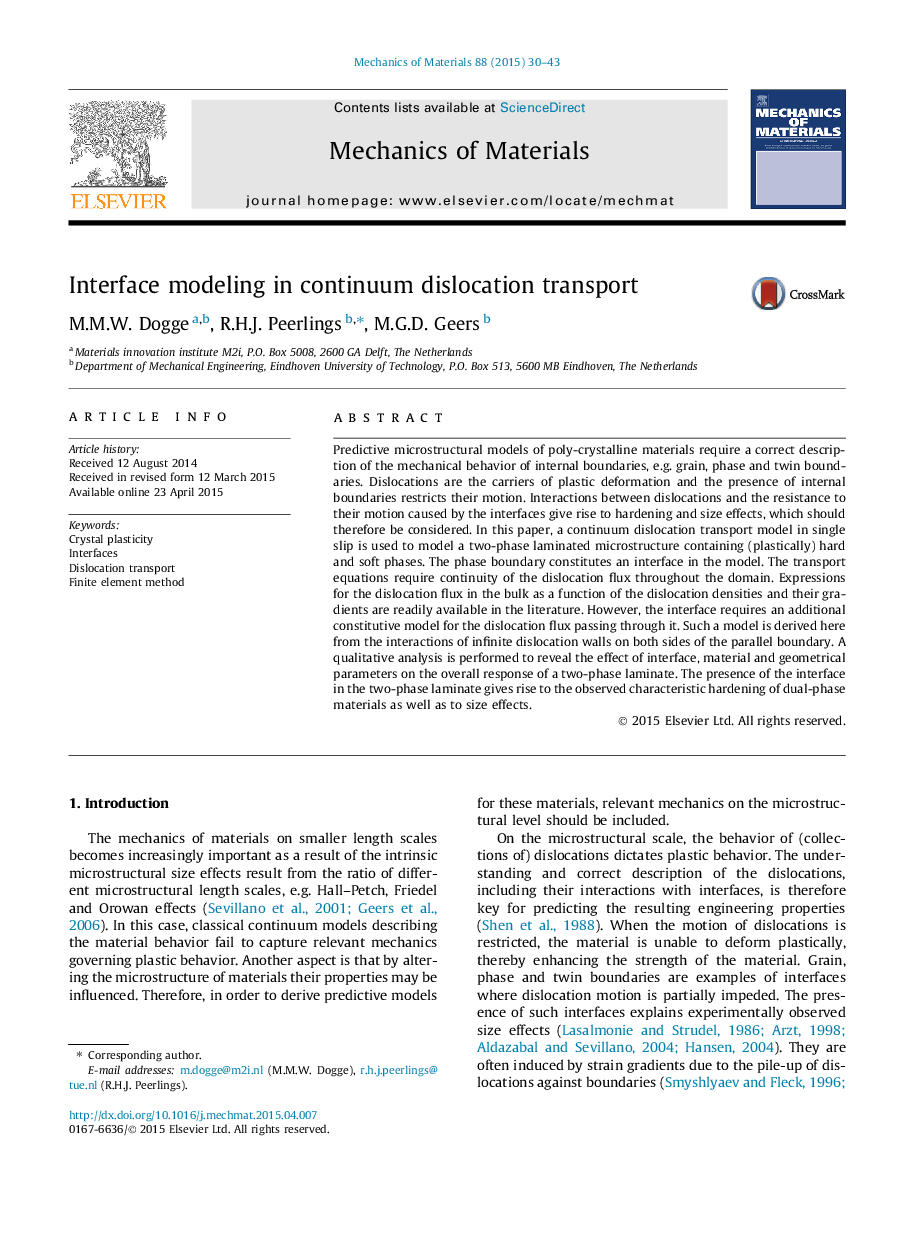| Article ID | Journal | Published Year | Pages | File Type |
|---|---|---|---|---|
| 797544 | Mechanics of Materials | 2015 | 14 Pages |
•Dislocation transport in an idealized, periodic two-phase microstructure is modeled.•The phase boundary is incorporated in the model by means of interface conditions on the dislocation densities.•This additional restriction on dislocation motion gives rise to additional hardening.•A parameter study is carried out, highlighting in particular a microstructural (grain)-size effect.
Predictive microstructural models of poly-crystalline materials require a correct description of the mechanical behavior of internal boundaries, e.g. grain, phase and twin boundaries. Dislocations are the carriers of plastic deformation and the presence of internal boundaries restricts their motion. Interactions between dislocations and the resistance to their motion caused by the interfaces give rise to hardening and size effects, which should therefore be considered. In this paper, a continuum dislocation transport model in single slip is used to model a two-phase laminated microstructure containing (plastically) hard and soft phases. The phase boundary constitutes an interface in the model. The transport equations require continuity of the dislocation flux throughout the domain. Expressions for the dislocation flux in the bulk as a function of the dislocation densities and their gradients are readily available in the literature. However, the interface requires an additional constitutive model for the dislocation flux passing through it. Such a model is derived here from the interactions of infinite dislocation walls on both sides of the parallel boundary. A qualitative analysis is performed to reveal the effect of interface, material and geometrical parameters on the overall response of a two-phase laminate. The presence of the interface in the two-phase laminate gives rise to the observed characteristic hardening of dual-phase materials as well as to size effects.
